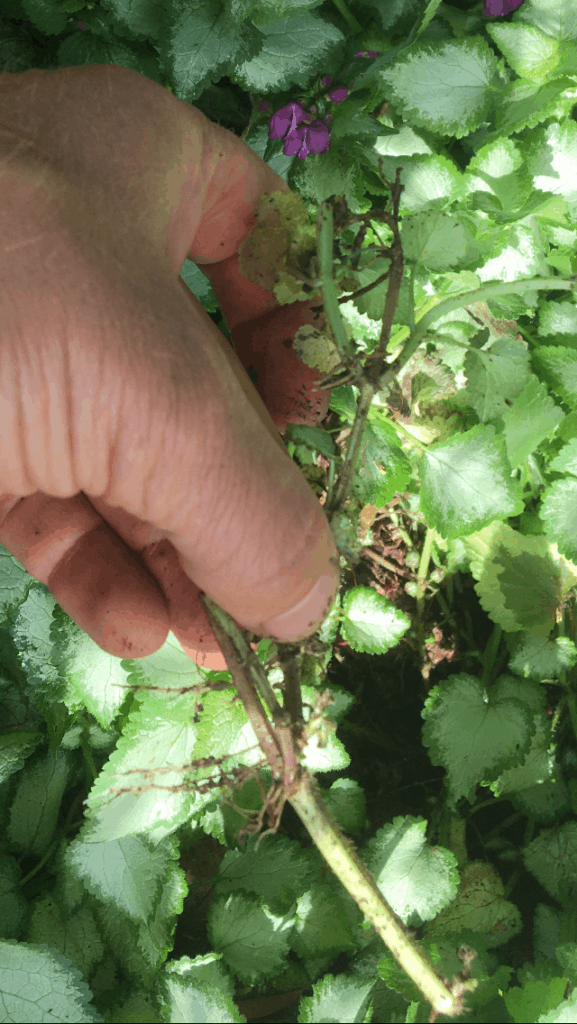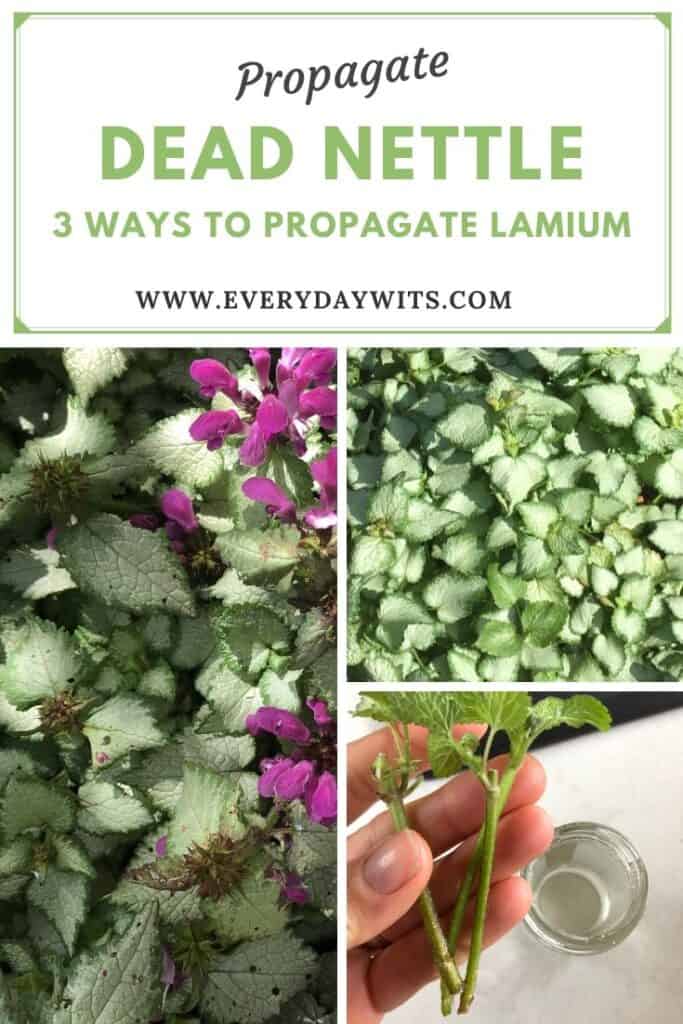Lamium or dead nettle is an attractive ground cover perennial. It’s best suited to shaded areas of the garden. Dead nettle is really easy to propagate and there are 3 ways this can be accomplished:
- Cuttings
- Layering
- Division
The method you choose depends on how many plants you need and how much disturbance your willing to carry out on the mother plant.
Cuttings
Cuttings is our preferred method of propagation in our wholesale nursery. First of all it allows us to create large amounts of new plants with one or two original plants. Secondly it doesn’t cause too much distance to the original plants.
The best time to take cuttings of lamium is in late spring, through till autumn.
A good cutting will go from one leaf node to the next. A leaf node if the part of the stem where new shoots or leaves sprout from. Most often these nodes are a couple of inches apart.

Strip away the lower leaves but keep the top ones as shown in the photo above.
To strike the roots on the cuttings there is two options. We use a mixture of perlite and peat moss. This is a mix of 90% perlite and 10% peat moss. Both can be purchased online or at most garden centres.
This is a mix we use on almost every plant we take cuttings of in the nursery (check out our propagation page to see all the plants we propagate). Cuttings in a perlite peat moss mix need to be kept moist and in a shaded position.
If you are only going to take a small number of cuttings i would strike the roots of lamium in water. Still store them in an area out of direct light.
Roots in both mediums will develop quickly. You should have a good root system within 4-6 weeks. Once the roots have developed you can pot them into soil.
Keep the freshly potted plants in a shaded area and out of the wind. Once the roots fill the pot you can plant them into the garden, share with friends or sell them.
Layering
Layering is a form of propagation similar to taking cuttings except that you don’t remove the stem until roots have developed. There’s a number of ways this can be achieved by the home gardener, which i may discuss in a later article.
In the case of lamium its very straight forward as the plant naturally layers itself. Being a ground cover the stems are in contact with the soil. If the soil is moist enough the plant will set down additional roots.
Like with the cuttings this will occur around leaf nodes. Simply hunt around the plant and look for pieces of stems in contact or buried in the soil. When you find a piece of stem with some root growth you can snip it off.

Now you effectively have and already rooted cutting. To avoid plant stress remove the majority of the leaves but not all. Plant in a pot or the garden, remember to select a shaded site.
Water the freshly planted lamium well and keep moist for a couple of weeks. Once the plant doubles in size it should be able to take care of itself.
Division
The last method and the easiest is division. To divide lamium i simply dig up a portion of the plant with a shovel. Make sure you go deep enough that you get as much root as possible. 4-6 inches (12-15cm) is plenty.
The new plant can be planted directly into the garden. Give it a good soaking and you’re done! As you can see division will establish a new plant faster than the other two methods but causes far more disturbance to the original plant.
If this has been helpful we would love if you subscribed to our mailing list and youtube channel.

Lamium maculatum information
Lamium maculatum is a very attractive, evergreen ground cover. Throughout most of the year it produces attractive pink flowers. The most prolific blooming is from late spring through summer.
Even when lamium isn’t in flower the foliage is very attractive and provides year round interest. Lamium can be grown in hanging baskets, window planters or the shaded areas of the garden.
Lamium prefers moist well drained soil. It likes to be kept in a shaded area of the garden. It can tolerate dry shade once established.
Cultural notes
Botanical name: Lamium maculatum
Common name: Dead nettle
Family: Lamiaceae
Native to: Europe & Asia
Flowers: Most of the year except winter
Position: Shade
Height: 15cm
Width: 90cm
